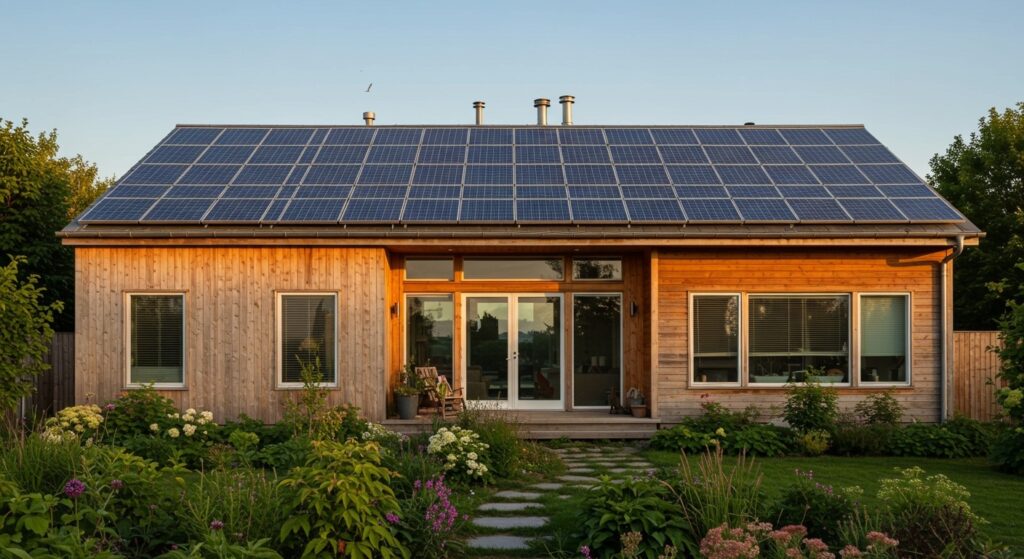Have you ever walked into a space and just felt better? Not just because it looked good, but because something about it felt clean, natural, and alive? That’s the magic of an eco house. It’s not about making your home look like a science experiment or sacrificing style for sustainability. It’s about creating a living space that works with nature instead of against it.
More people are rethinking how their homes impact the planet and their own health. An eco house isn’t just about slapping some solar panels on the roof and calling it a day. It’s a thoughtful approach to design, materials, and daily habits that reduce waste, conserve energy, and create a healthier environment for your family. And honestly? The results can be stunning.
Whether you’re planning a major renovation, building from scratch, or just looking for small changes that make a difference, these ideas will show you how sustainability and beautiful design can go hand in hand. Some might surprise you with how simple they are to implement.
1. Install Solar Panels for Renewable Energy

Solar panels have come a long way from those clunky blue rectangles that screamed “I’m saving the planet!” Now they’re sleek, efficient, and in many areas, more affordable than you’d think. They convert sunlight into electricity, reducing your dependence on fossil fuels and cutting your energy bills significantly.
The initial investment might make you pause, but many regions offer tax credits, rebates, or financing options that soften the blow. Plus, solar technology has improved so much that panels work even on cloudy days. You don’t need a mansion-sized roof either. Even a modest installation can power a good chunk of your home’s needs.
Beyond the practical benefits, there’s something satisfying about generating your own power. You’re not just reducing your carbon footprint. You’re taking control of one of your home’s biggest ongoing expenses while contributing to a cleaner energy grid for everyone.
2. Choose Reclaimed Wood for Flooring and Furniture
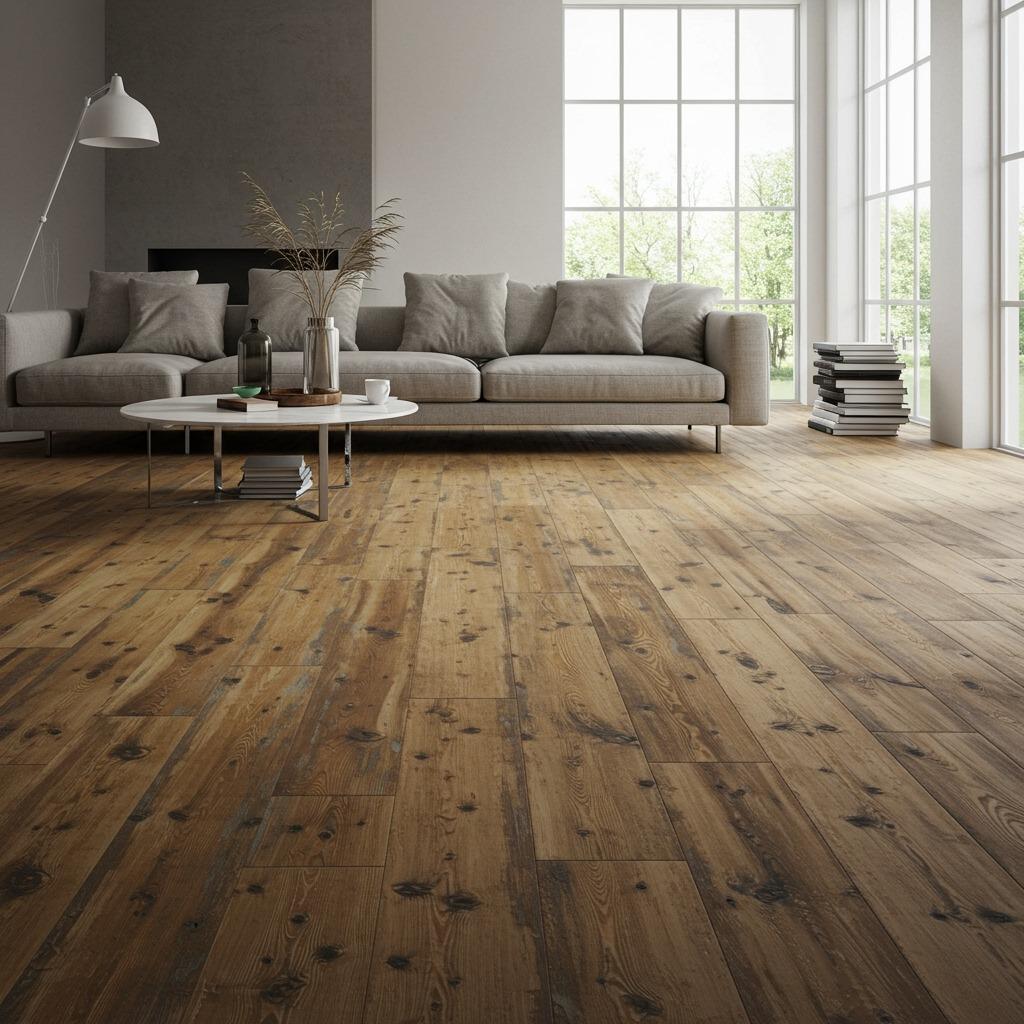
Reclaimed wood tells a story. Maybe it came from an old barn, a demolished factory, or salvaged shipping pallets. Each piece has character, unique grain patterns, and a history that
new lumber simply can’t match. Using reclaimed materials keeps perfectly good wood out of landfills and reduces the demand for newly harvested timber.
The aesthetic payoff is real. Those weathered textures and natural imperfections add warmth and authenticity that make a space feel lived-in from day one. Whether you’re installing flooring, building furniture, or creating an accent wall, reclaimed wood brings depth and personality that manufactured materials struggle to replicate.
Finding reclaimed wood has gotten easier too. Specialty suppliers, salvage yards, and even online marketplaces connect you with materials from demolished buildings and renovation projects. Yes, you might need to do some cleaning or refinishing, but that’s part of what makes each piece special. You’re not just decorating. You’re giving old materials new life.
3. Incorporate Natural Insulation Materials
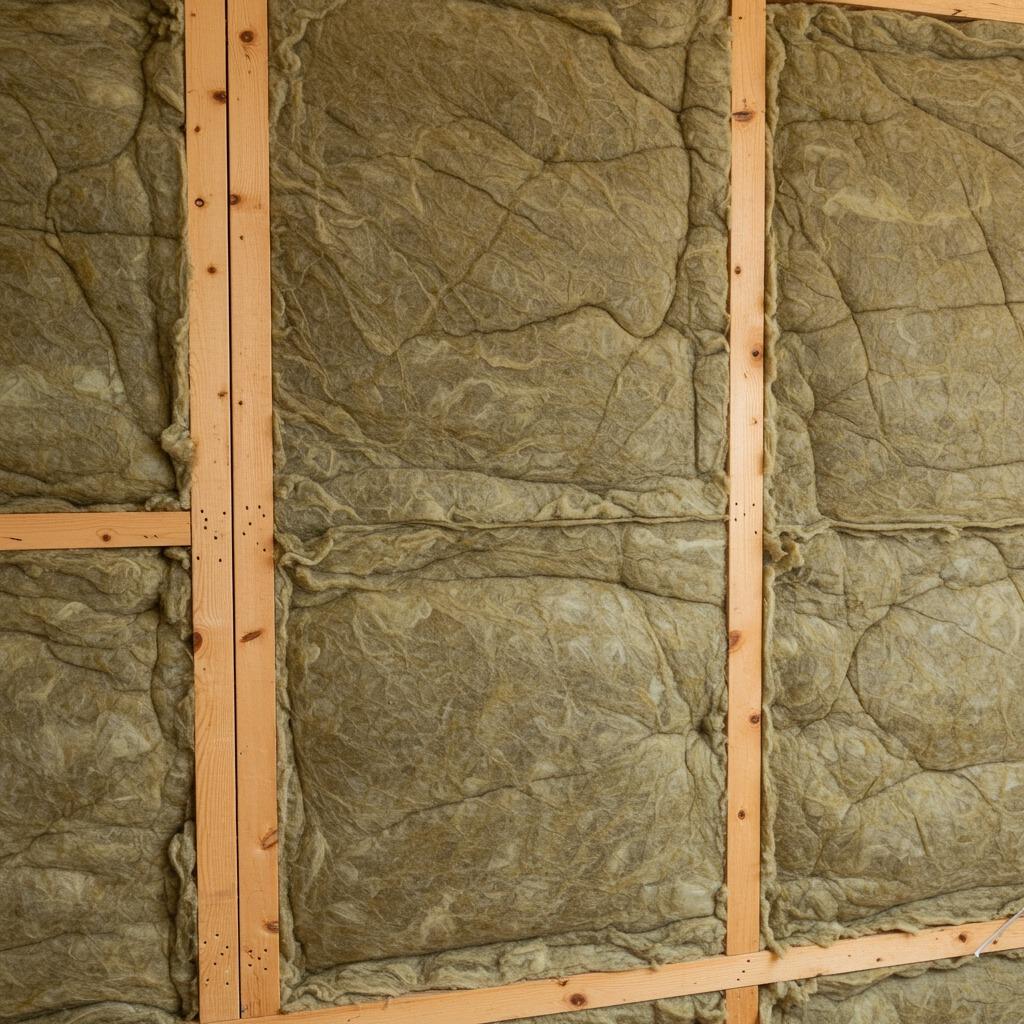
Most people don’t think about insulation until something goes wrong, but it’s one of the most important factors in an eco house. Traditional fiberglass insulation works, sure, but natural alternatives like sheep’s wool, recycled denim, cork, and cellulose offer better performance while being kinder to the planet and your indoor air quality.
Sheep’s wool insulation naturally regulates moisture and doesn’t require the harsh chemicals found in conventional options. Recycled denim insulation, made from old jeans, provides excellent soundproofing along with thermal protection. Cork is naturally fire-resistant and doesn’t harbor mold. These materials might cost a bit more upfront, but they often outperform standard insulation in the long run.
Better insulation means your heating and cooling systems don’t have to work as hard, which translates to lower energy bills and a more comfortable home year-round. You’re creating a tighter building envelope that maintains consistent temperatures naturally, reducing your reliance on artificial climate control.
4. Create a Rainwater Harvesting System
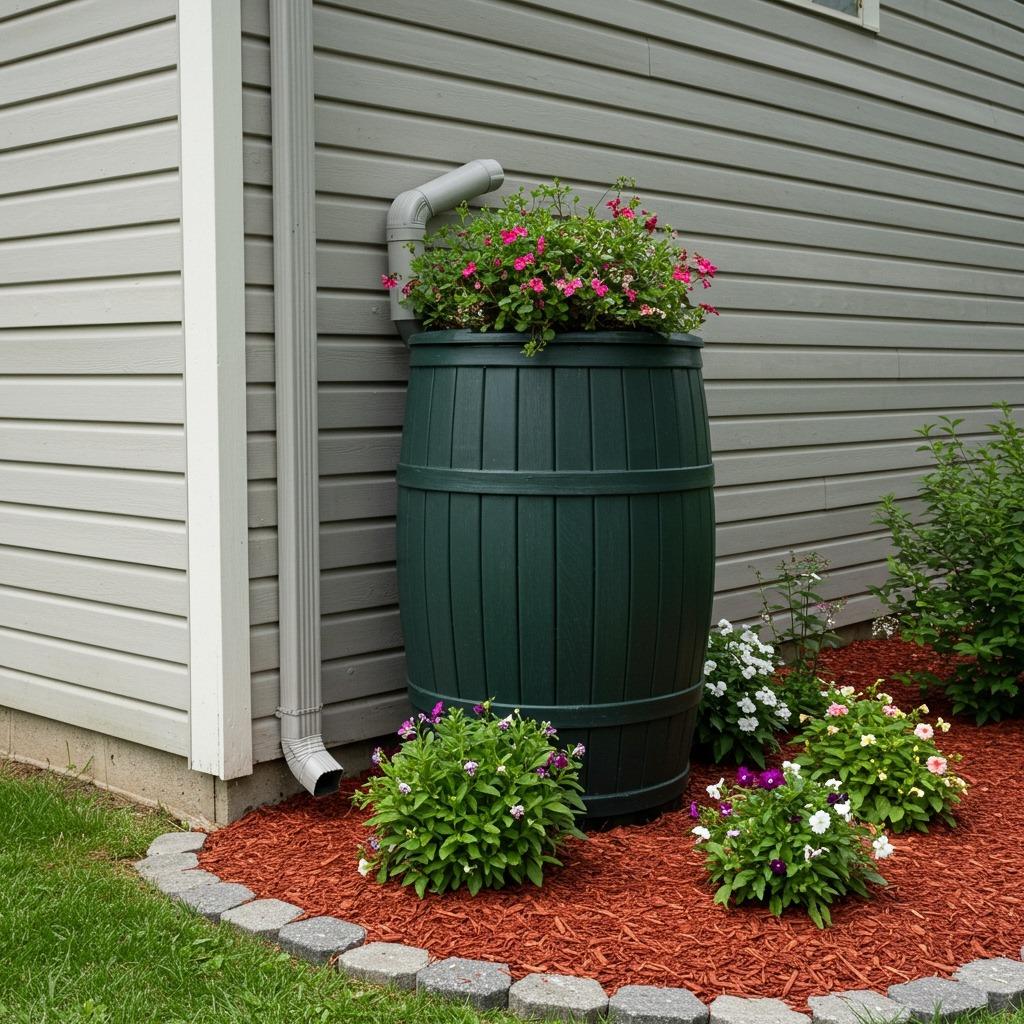
Water scarcity isn’t just a problem in desert regions anymore. Even areas with regular rainfall are seeing the benefits of capturing and using rainwater for gardens, landscaping, and sometimes even indoor non-potable uses. A rainwater harvesting system collects water from your roof, filters it, and stores it for later use.
The setup can be as simple as a rain barrel connected to your downspout or as sophisticated as an underground cistern with pumps and filtration systems. Even a basic system can collect hundreds of gallons during a good storm, providing free water for your plants while reducing runoff that can carry pollutants into local waterways.
Using harvested rainwater for irrigation makes practical sense too. It’s naturally soft, free of chlorine and other treatment chemicals, and actually better for plants than treated municipal water. You’re reducing your water bill, decreasing demand on local water supplies, and creating a more self-sufficient home ecosystem.
5. Install Energy-Efficient Windows and Doors
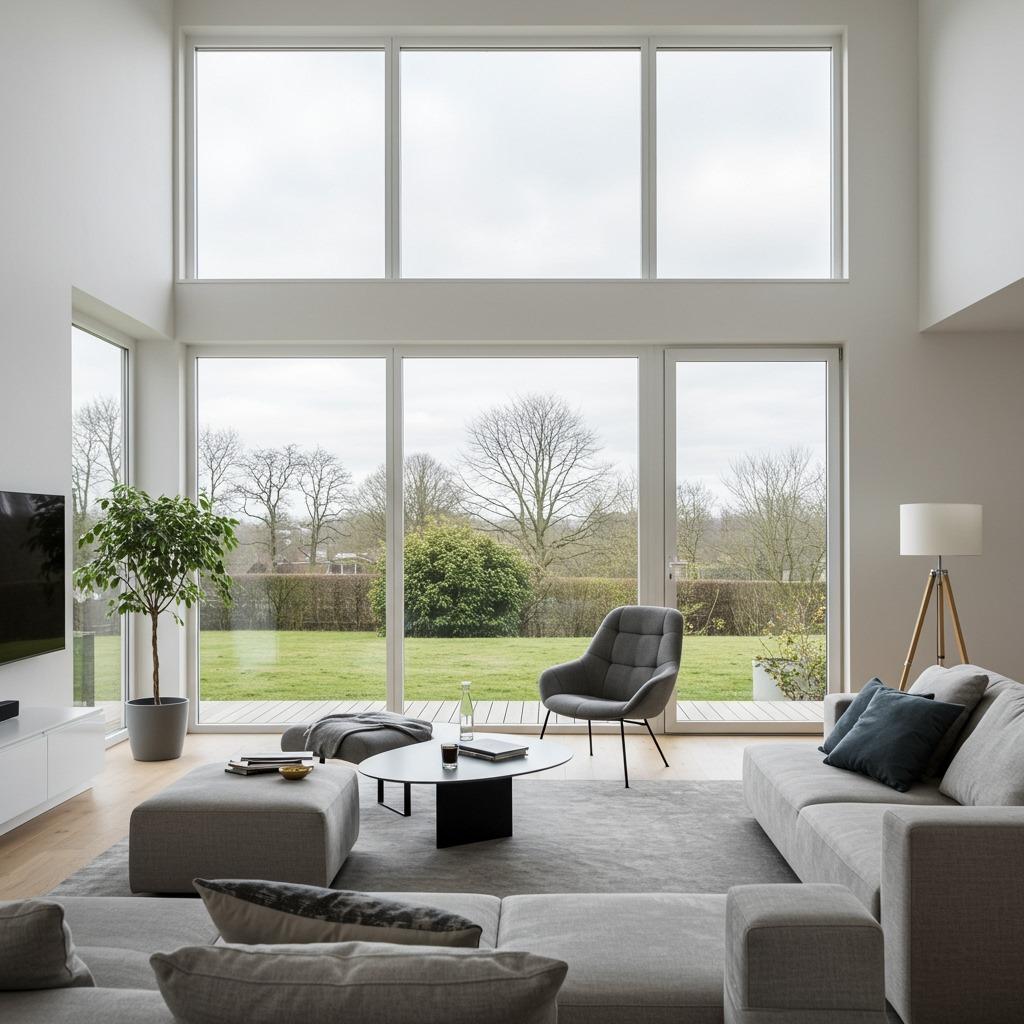
Windows and doors are basically holes in your home’s protective shell. If they’re old or poorly sealed, they’re bleeding energy and money. Modern energy-efficient windows with double or triple glazing, low-E coatings, and insulated frames can dramatically reduce heat transfer, keeping your home comfortable without overworking your HVAC system.
The right windows do more than save energy. They reduce outside noise, minimize UV damage to your furniture and floors, and eliminate those annoying cold drafts near windows in winter. When shopping, look for the ENERGY STAR label and pay attention to U-factor and Solar Heat Gain Coefficient ratings for your climate zone.
Don’t forget about doors. An insulated entry door with proper weatherstripping makes a noticeable difference. If replacement isn’t in your budget right now, even adding weatherstripping and door sweeps to existing doors improves efficiency. Sometimes the smallest changes create the most immediate comfort improvements.
6. Use Low-VOC and Natural Paints
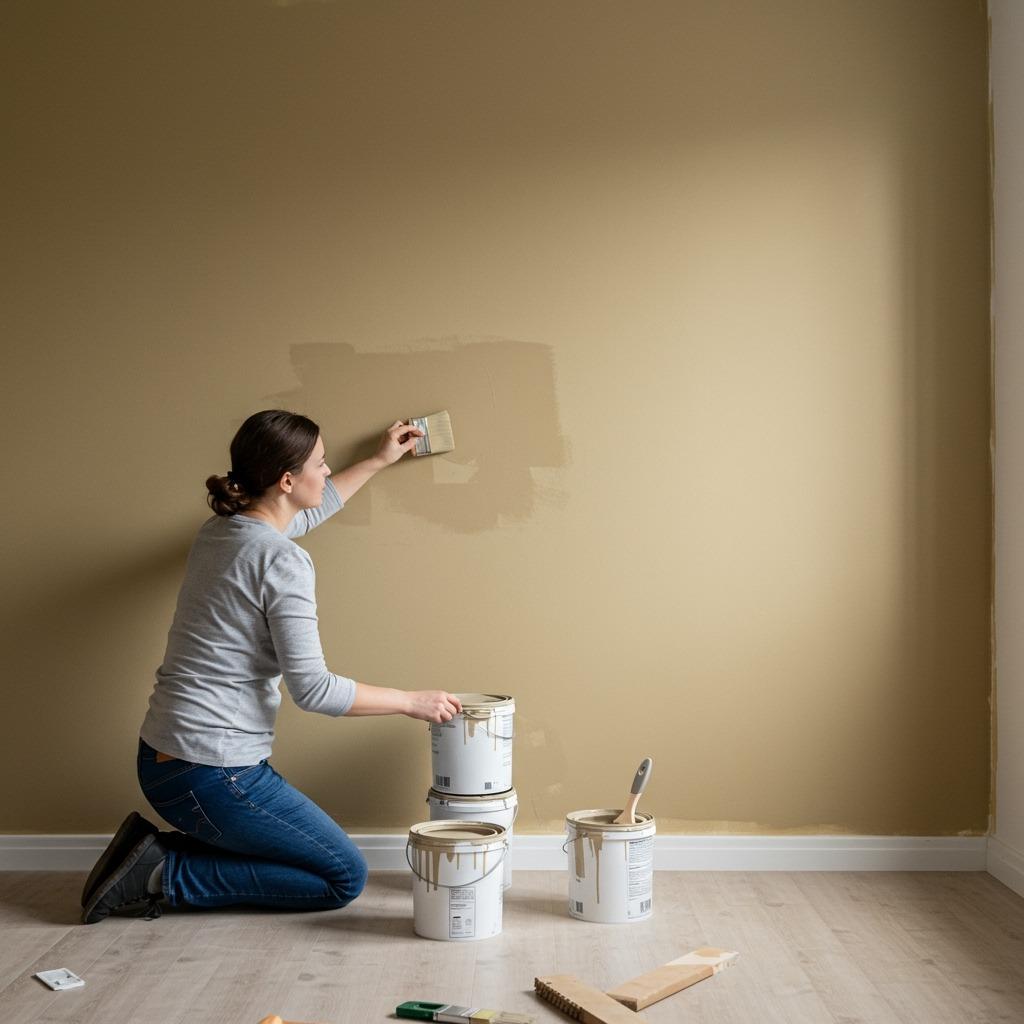
That fresh paint smell? It’s actually volatile organic compounds (VOCs) off-gassing into your air. These chemicals can cause headaches, respiratory irritation, and long-term health effects. Low-VOC and zero-VOC paints have come so far that you don’t sacrifice color options or durability when you choose healthier alternatives.
Natural paints made from clay, milk protein, or plant-based ingredients take things even further. They’re biodegradable, produce almost no odor during application, and create beautiful, unique finishes. Clay paints, for example, have a soft, matte texture that hides wall imperfections while naturally regulating humidity.
The color payoff with natural paints can surprise you. The pigments create rich, complex tones that shift subtly with changing light throughout the day. You’re not just painting walls. You’re choosing what your family breathes every single day.
7. Design with Passive Solar Principles
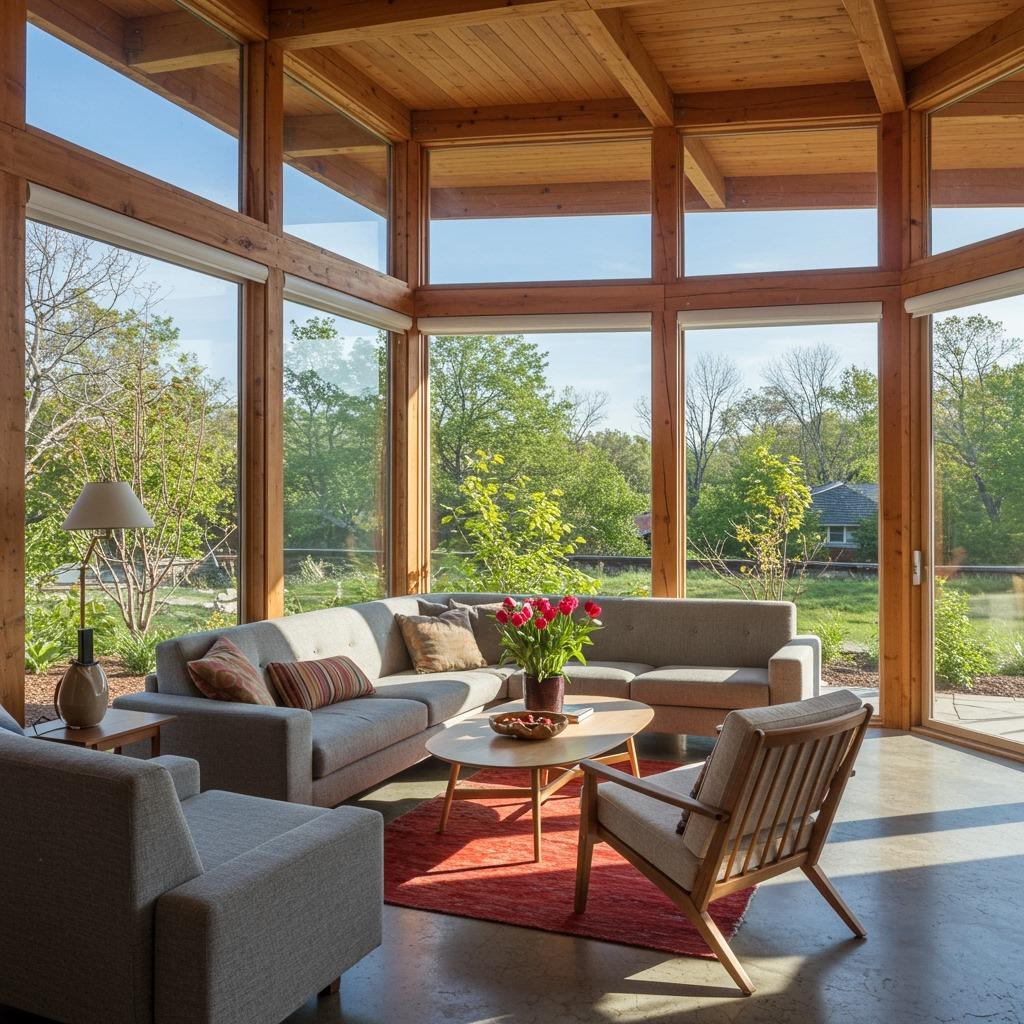
Passive solar design sounds technical, but it’s really just working with the sun instead of against it. By strategically placing windows, choosing appropriate building materials, and thinking about orientation, you can heat and cool your home naturally, reducing energy consumption dramatically.
South-facing windows (in the Northern Hemisphere) capture winter sun when it’s low in the sky, warming your home when you need it most. Properly sized roof overhangs shade those same windows in summer when the sun is higher, keeping things cool. Thermal mass materials like concrete, stone, or tile absorb heat during the day and release it slowly at night, evening out temperature swings.
Even if you’re not building from scratch, you can apply these principles. Add awnings over south-facing windows, use light-colored window treatments to bounce light deeper into rooms, or place heat-absorbing materials where sunlight naturally falls. It’s about observation and small adjustments that work with your home’s natural patterns.
8. Create a Green Roof or Living Wall
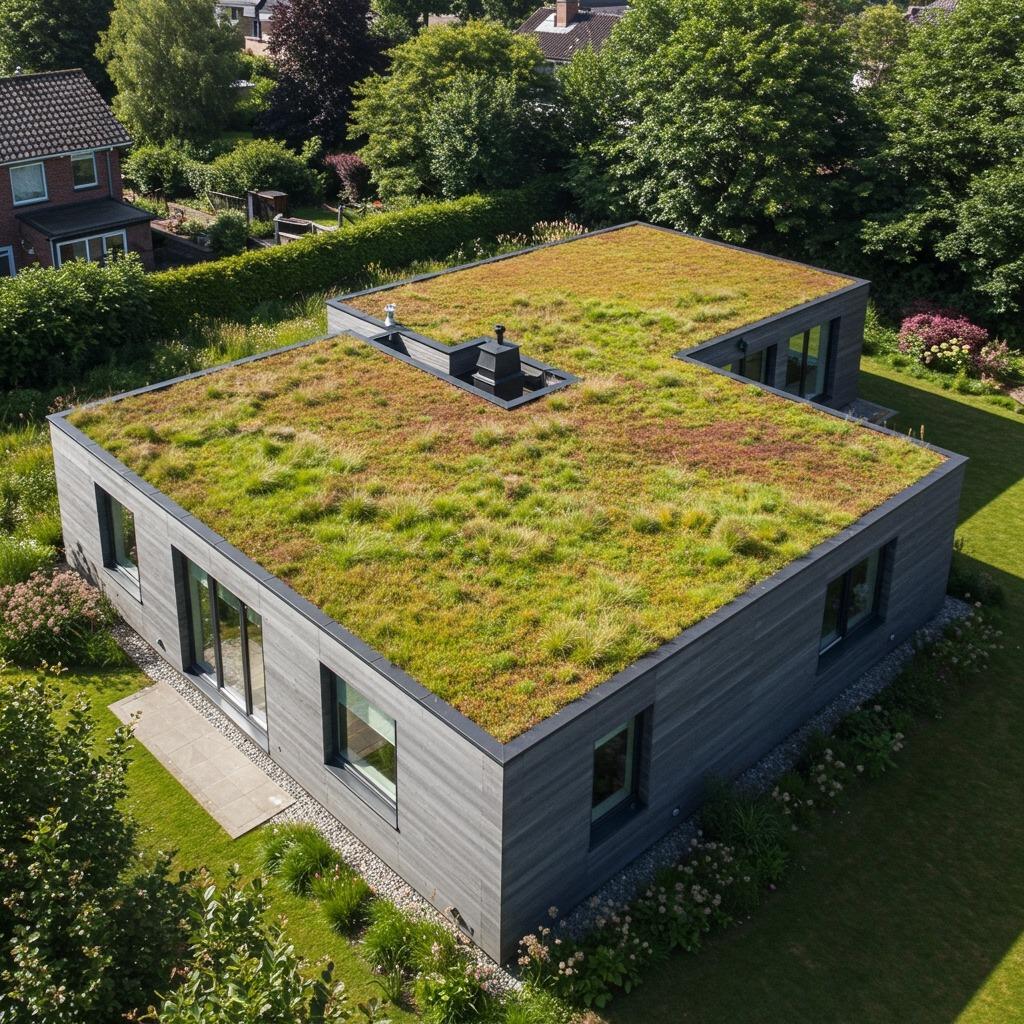
Green roofs and living walls sound ambitious, but they’re increasingly accessible for residential projects. A green roof is essentially a planted roof surface that provides insulation, manages stormwater, reduces urban heat island effect, and creates habitat for pollinators. A living wall brings similar benefits vertically, turning a blank wall into a living, breathing piece of art.
These installations do more than look impressive. They improve air quality by filtering pollutants, reduce noise transmission, and extend the lifespan of your roof or wall by protecting it from UV radiation and temperature extremes. In urban areas, they create precious green space where land is limited.
Starting small makes sense if you’re curious. A modular living wall system or a small section of green roof over a garage or shed lets you experiment without committing to a whole-house transformation. The maintenance is less intense than you’d think. Native plants suited to your climate do most of the work themselves.
9. Install a Greywater Recycling System
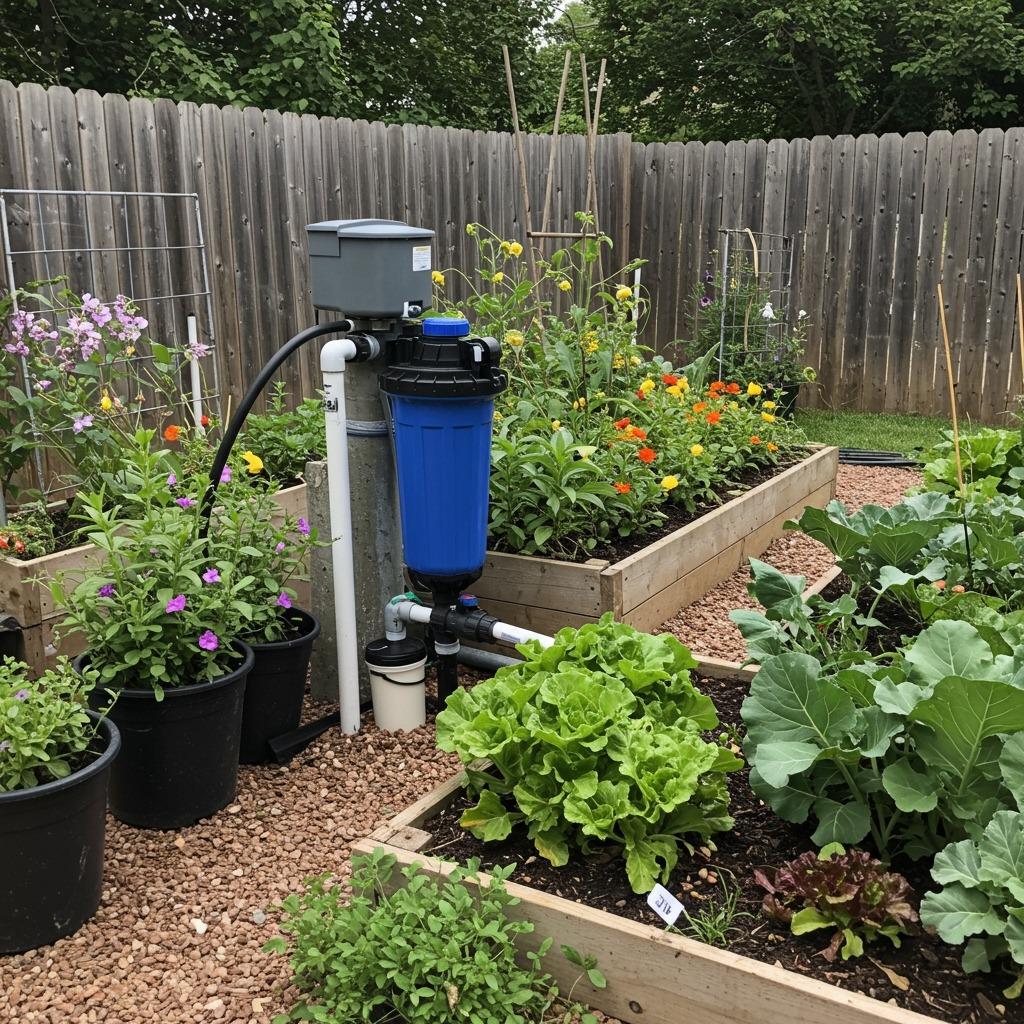
Greywater is the relatively clean wastewater from sinks, showers, and washing machines. It’s not drinkable, but it’s perfectly fine for watering your landscape. A greywater system captures this water, filters it lightly, and redirects it to irrigation, keeping it out of the sewer system and putting it to productive use.
The environmental math is compelling. The average household can recycle 40-50% of its water use through greywater systems. That’s thousands of gallons per year that don’t need to be treated, transported, or paid for. Your plants get regular watering, and you’re reducing strain on municipal water and wastewater treatment facilities.
Local codes vary significantly on greywater systems, so research your area’s regulations before diving in. Some places encourage it with streamlined permitting, while others have restrictions. Even a simple system that redirects your washing machine discharge to a mulch basin around fruit trees can make a difference. You’re closing the loop on water use in your own backyard.
10. Choose Sustainable Bamboo Materials
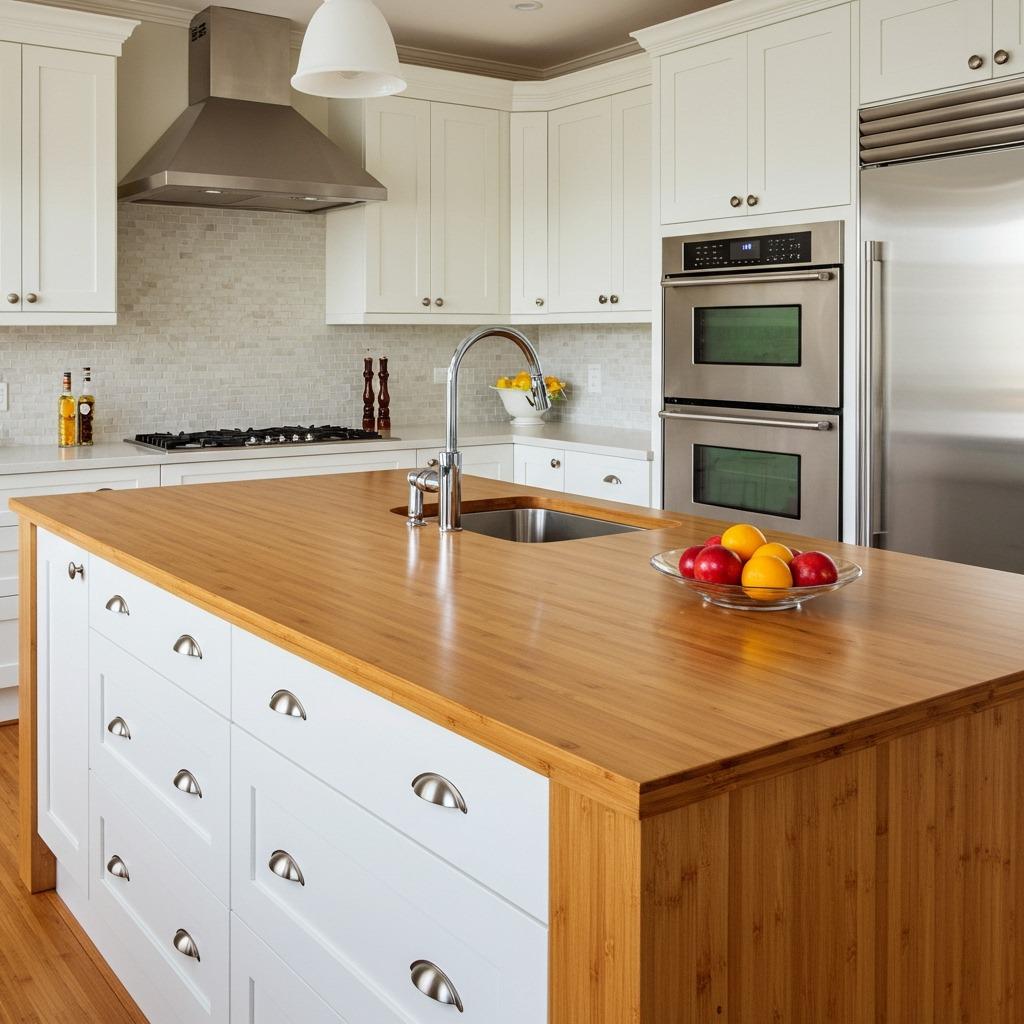
Bamboo grows incredibly fast, sometimes several feet per day, making it one of the most renewable building materials available. Unlike hardwood trees that take decades to mature, bamboo reaches harvestable size in 3-5 years. It’s strong, versatile, and works beautifully for flooring, furniture, countertops, and even structural elements.
The finished product doesn’t look cheap or temporary. High-quality bamboo flooring rivals hardwood in durability and appearance, with a distinctive grain pattern that adds visual interest. It’s naturally moisture-resistant, making it suitable for kitchens and bathrooms where traditional hardwood might struggle. The color variations, from light natural to rich carbonized tones, fit virtually any design aesthetic.
Quality matters with bamboo products. Look for Forestry Stewardship Council (FSC) certification to ensure sustainable harvesting practices. Cheaper bamboo products sometimes use formaldehyde-based adhesives, defeating the eco-friendly purpose. Asking questions about sourcing and manufacturing processes ensures you’re getting genuinely sustainable materials.
11. Integrate Smart Home Technology for Energy Management

Smart home technology isn’t just about convenience. When used thoughtfully, it’s a powerful tool for reducing energy waste. Smart thermostats learn your schedule and preferences, automatically adjusting temperatures when you’re away. Smart lighting systems dim or turn off lights in unoccupied rooms. Energy monitoring systems show you exactly where your energy goes, helping you make informed decisions.
The data these systems provide can be eye-opening. You might discover your old refrigerator is an energy hog, or that your phantom power draw from devices in standby mode adds up to more than you’d think. Smart home improvement gives you visibility and control that wasn’t possible before, turning abstract concepts like energy consumption into concrete, actionable information.
The beauty is in the automation. Once you set up your preferences, the system handles the details. Your water heater doesn’t keep water scalding hot when you’re on vacation. Your HVAC system pre-cools your home using off-peak energy rates. Small adjustments happen automatically, adding up to significant savings without requiring constant attention.
12. Use Natural Stone and Clay Materials

Natural stone and clay have been building materials for thousands of years because they work. They’re durable, beautiful, and require minimal processing compared to manufactured alternatives. Stone floors, clay tiles, and earthen plasters create spaces that feel grounded and connected to nature while offering practical benefits.
These materials excel at thermal mass, absorbing heat during the day and releasing it slowly as temperatures drop. This natural temperature regulation reduces heating and cooling needs. Stone and clay are also incredibly durable. A properly installed stone floor or clay tile roof can last for generations with minimal maintenance, reducing the environmental impact of replacement and disposal.
The aesthetic impact shouldn’t be underestimated. Natural stone brings unique patterns and colors that can’t be replicated. Clay tiles add earthy warmth and texture. These materials age gracefully, developing character rather than just wearing out. You’re choosing materials that improve with time rather than deteriorating.
13. Create a Composting System
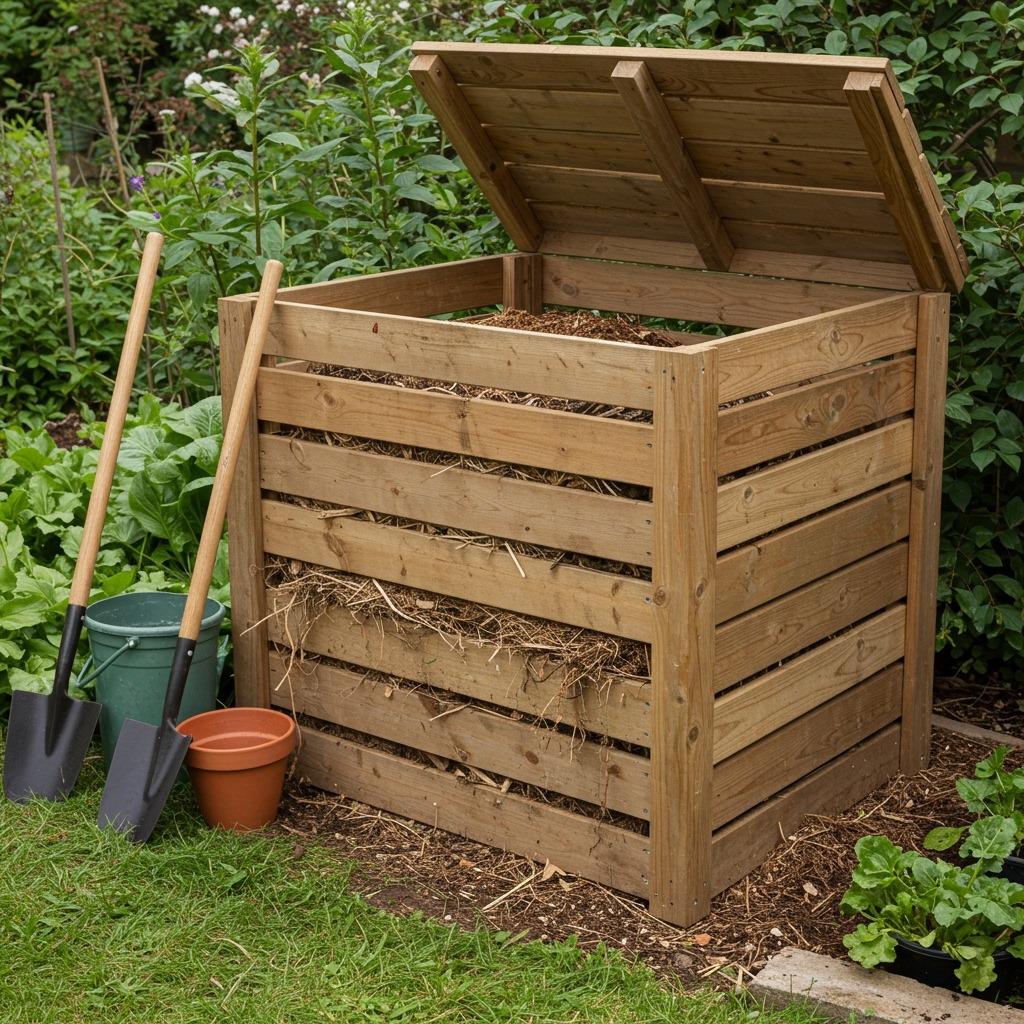
A composting system turns your kitchen scraps and yard waste into rich soil amendment, closing the nutrient loop and keeping organic matter out of landfills. When organic waste breaks down in landfills without oxygen, it produces methane, a potent greenhouse gas. Composting that same material produces valuable humus that improves soil health and reduces the need for chemical fertilizers.
The process is simpler than people think. You don’t need a fancy system or a lot of space. A basic compost bin in the corner of your yard works fine. Kitchen scraps, coffee grounds, yard clippings, and shredded paper go in. Occasional turning and the right moisture balance come out as black gold for your garden in a few months.
Indoor composting options exist too. Vermicomposting (worm bins) handles kitchen scraps efficiently in a small footprint, perfect for apartments or homes without yard space. Electric composters speed up the process even more, breaking down food waste in hours instead of months. Whichever system you choose, you’re taking responsibility for your organic waste while creating something valuable.
14. Install Cork Flooring
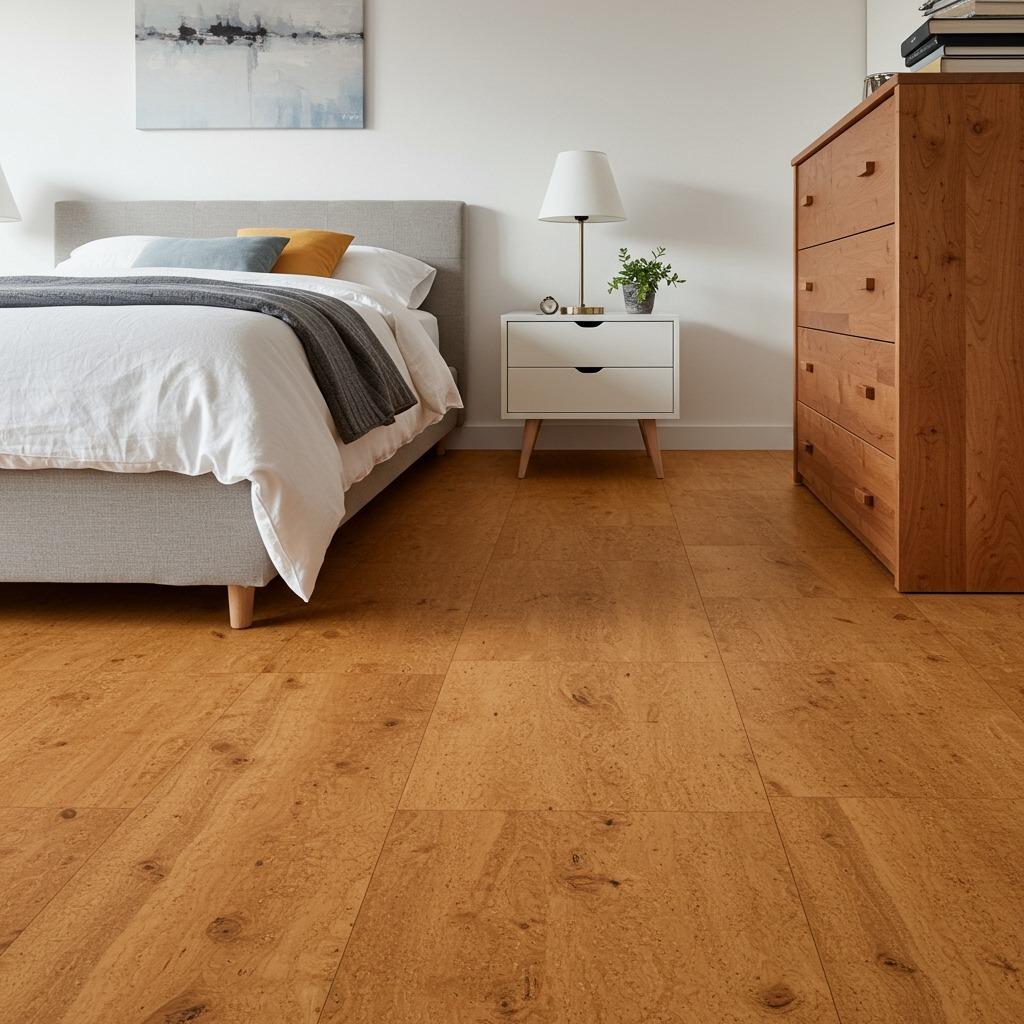
Cork flooring offers a unique combination of sustainability, comfort, and style. Cork is harvested from the bark of cork oak trees without cutting them down. The trees regenerate their bark every 9-10 years, making cork one of the most renewable flooring materials available. The harvesting process actually benefits the trees, helping them absorb more CO2.
Walking on cork feels different, in a good way. It’s naturally cushioned and warm underfoot, easier on joints than hard surfaces like tile or hardwood. The cellular structure provides natural sound absorption, reducing noise transmission between floors. Cork is also naturally antimicrobial and resistant to mold, mildew, and pests, contributing to better indoor air quality.
The design options have expanded significantly. Cork flooring now comes in various colors, patterns, and finishes that work with modern or traditional aesthetics. It’s suitable for most rooms, though you’ll want to use it carefully in very wet areas. With proper sealing and reasonable care, cork floors can last 25 years or more..
15. Design Multi-Functional Spaces
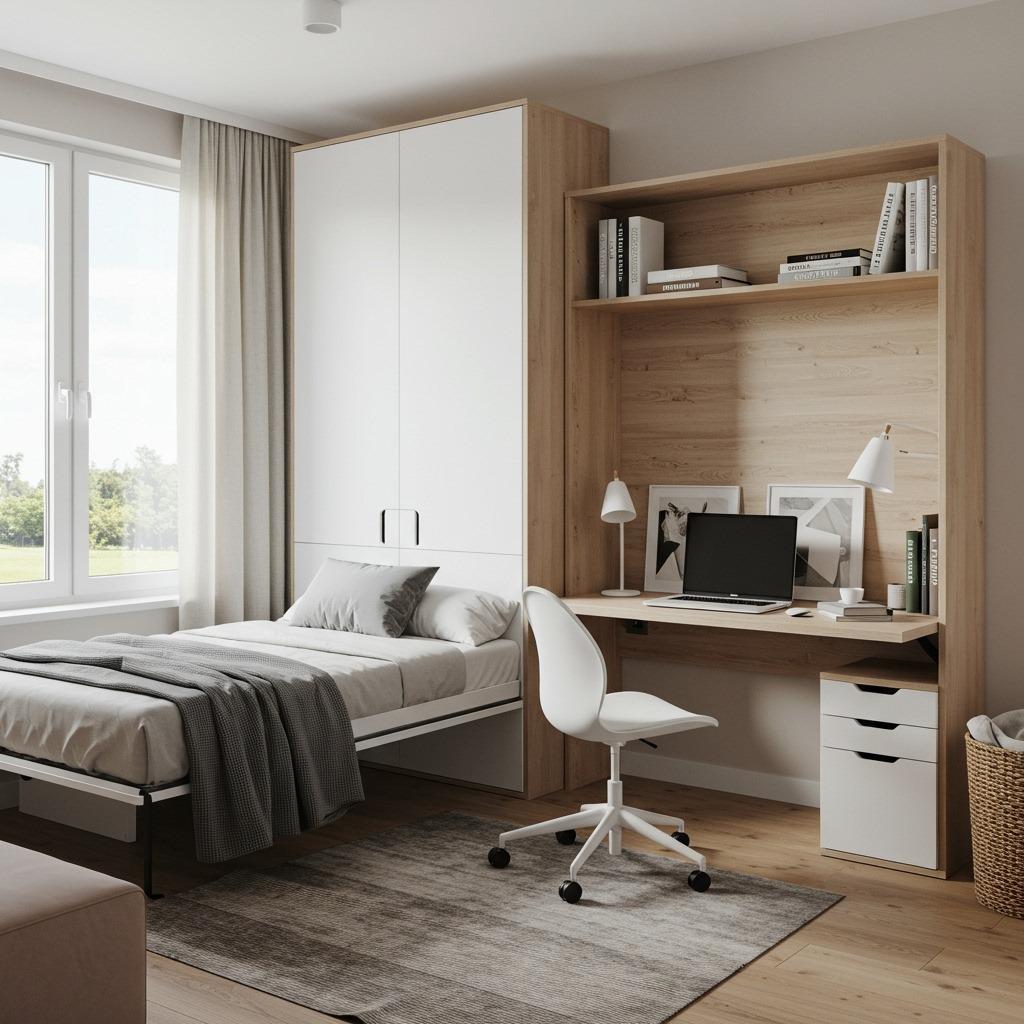
Eco-conscious design isn’t just about materials and energy systems. It’s also about using space efficiently. Multi-functional spaces reduce the overall square footage you need, which means less material, less energy to heat and cool, and ultimately a smaller environmental footprint. A guest room that doubles as a home office, or a dining area that transforms into a workspace maximizes utility without demanding extra space.
Smaller, well-designed spaces often feel more comfortable than large, poorly planned ones. When every square foot serves a purpose, there’s less wasted space and less stuff filling it up. Built-in storage, fold-down furniture, and thoughtful layouts make compact living feel spacious rather than cramped.
This approach aligns with broader sustainable living principles. Smaller homes use fewer resources to build and maintain. They encourage us to be more intentional about what we own and how we use our space. The result is often a home that feels more curated and less cluttered, where every element serves a purpose.
16. Incorporate Recycled Glass Countertops and Tiles
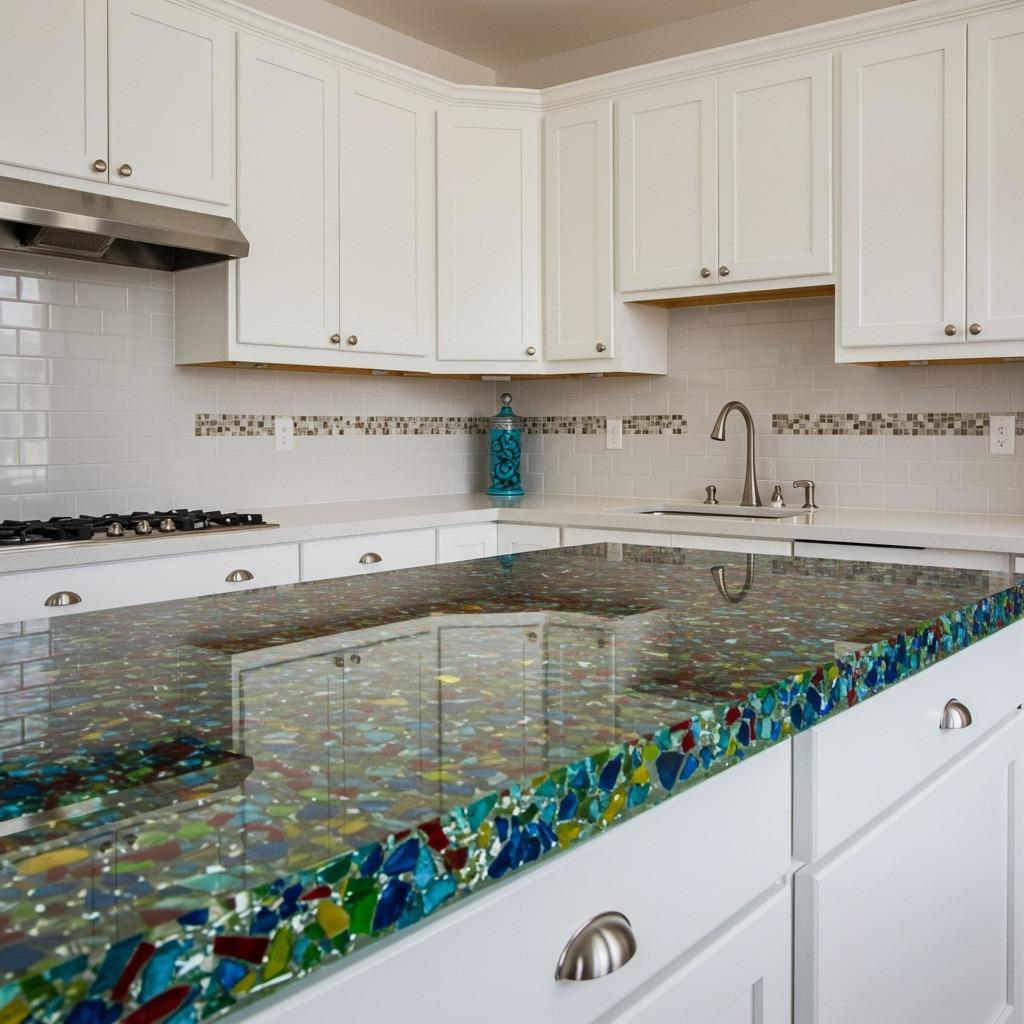
Recycled glass transforms waste into beautiful building materials. Countertops and tiles made from recycled glass bottles, jars, and other glass waste create stunning surfaces with depth and sparkle that standard materials can’t match. Each piece is unique, with color variations and patterns that catch and reflect light in interesting ways.
The environmental benefits are straightforward. You’re diverting glass from landfills and reducing demand for virgin materials like quartz or granite that require energy-intensive extraction and processing. Modern manufacturing techniques have made recycled glass products as durable and heat-resistant as traditional options, suitable for high-traffic areas and heavy use.
These materials work beautifully as kitchen countertops, bathroom vanities, or eye-catching backsplashes. The color options range from subtle earth tones to vibrant jewel colors, depending on the source glass. Maintenance is straightforward, requiring just basic cleaning with mild soap and water. You’re making a statement about sustainability without sacrificing style or functionality.
17. Grow an Edible Garden
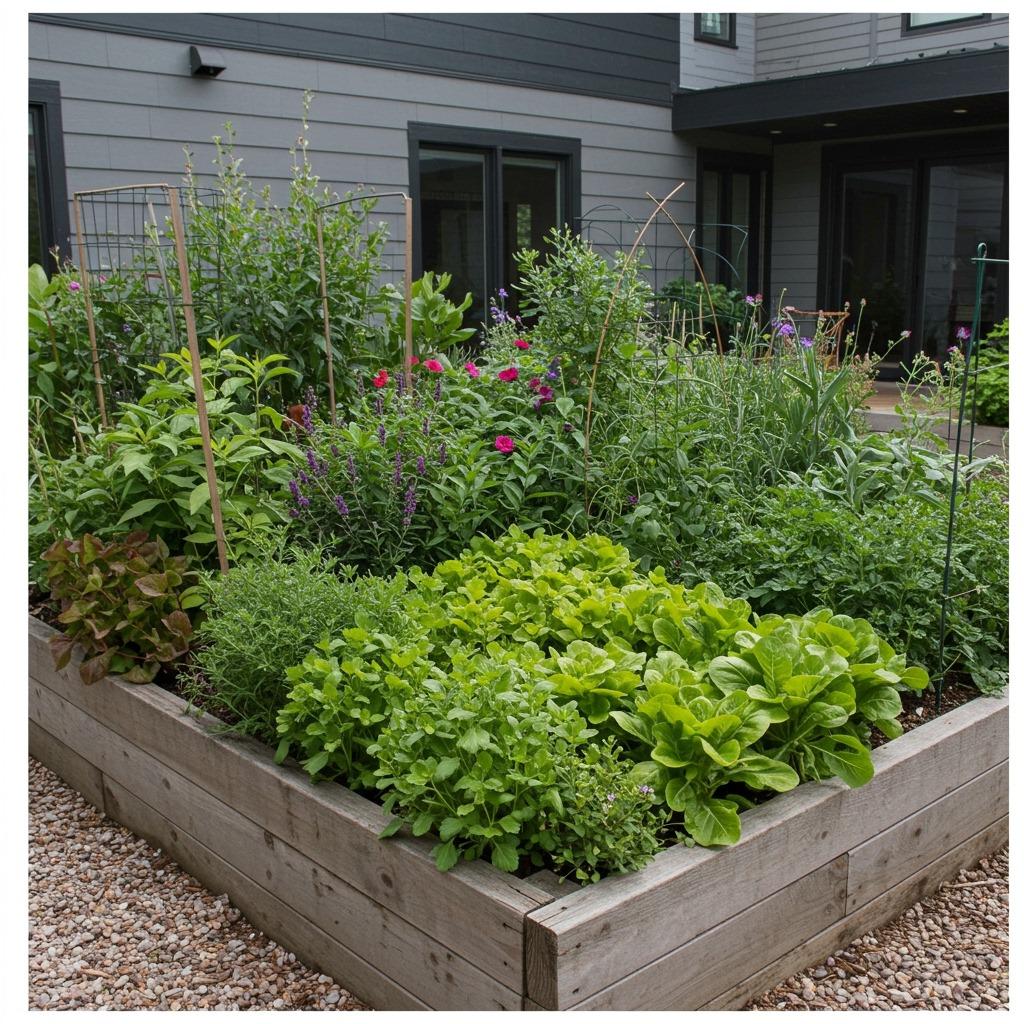
An edible garden brings food production right to your doorstep, reducing the environmental impact of transportation, packaging, and industrial agriculture. Whether you have a sprawling backyard or just a sunny balcony, growing some of your own food connects you to natural cycles and provides unmatched freshness and flavor.
The scale doesn’t matter as much as the intention. Even a few pots of herbs on a windowsill or tomatoes in containers make a difference. You know exactly how your food was grown, without pesticides or questionable practices. Plus, there’s something deeply satisfying about eating a salad made entirely from your own garden, even if it’s a small one.
Vertical gardening and intensive planting techniques maximize production in limited space. Companion planting reduces pest problems naturally. Composting your kitchen scraps creates fertilizer, closing the nutrient loop. You’re not just growing food. You’re creating a small ecosystem that works with nature rather than fighting it.
Creating an eco house isn’t about perfection. It’s about making thoughtful choices that align with your values and your budget. Some of these ideas require significant investment and planning, while others you can tackle this weekend with minimal expense. The important thing is starting somewhere.
Every sustainable choice you make creates a ripple effect. You’re improving your own health and comfort, reducing environmental impact, and often saving money in the long run. More than that, you’re contributing to a broader shift in how we think about our homes and their relationship with the planet. That’s worth celebrating, even if you only implement a few of these ideas at first.
Which of these eco house ideas resonates most with you? Maybe it’s time to finally install those solar panels you’ve been thinking about, or perhaps starting small with a compost bin feels more manageable right now. Whatever you choose, you’re moving toward a more sustainable, healthier way of living at home.

